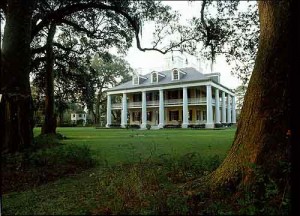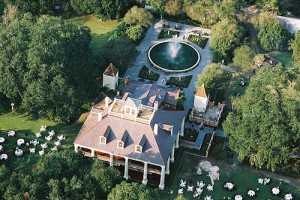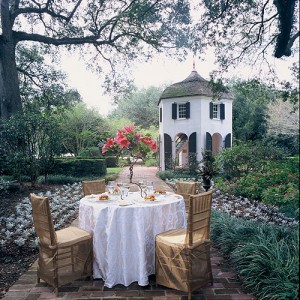 For thousands of years native Americans revered the spirit of the mighty river. Flowing 3,740 miles from its head waters in the heart land of America to the warm waters of the gulf of Mexico. In the decades prior to the civil war, sugar cane the new white gold redefines the landscape of the lower Mississippi valley. An estimated one third of all known millionaires live in palatial homes gracing both banks of this powerful nature thoroughfare. In 1861 an English traveler sir William Howard Russell crosses from Governor Romon’s Creole plantation on the west bank to that of Irishman John Burnside’s estate on the east.
For thousands of years native Americans revered the spirit of the mighty river. Flowing 3,740 miles from its head waters in the heart land of America to the warm waters of the gulf of Mexico. In the decades prior to the civil war, sugar cane the new white gold redefines the landscape of the lower Mississippi valley. An estimated one third of all known millionaires live in palatial homes gracing both banks of this powerful nature thoroughfare. In 1861 an English traveler sir William Howard Russell crosses from Governor Romon’s Creole plantation on the west bank to that of Irishman John Burnside’s estate on the east.
A quarter of an hour brought us to the levee on the other side. I ascended the bank and across the road directly in front of me appeared a carriage gateway with wickets of wood painted white, extending up and down the road as far as the eye could see. An avenue aligned with trees led to the house, the porch of which was visible at the extremity of the lawn with clustering flowers clinging to the pillars supporting the veranda.
Remarkably this portrait of the grand plantation is with us still. Houmas House the Sugar Palace of John Burnside is a rare treasure capturing an extraordinary epic in time. Tucked inside are the secrets, desires and often the conflict whims of four centuries of owners. Like an exotic dancer wrapped in veils, she twirls through time peeling back layers of architectural embellishments. Ornamentation appears and disappears. Current poses and figure fluctuates wildly cast aside like an outdated frock in the 1940′s. In the roaring 20′s her curved midsection is an integral part of the “Tue ta soum.” Between 1830 and 1880 two separate dwellings display a posing styles. In 1825 such immense grandeur is nowhere in evidence. The delicate silhouette of the front house is a west indies flare. Slender colonettes support a hipped roof with cabanas inclosing the gallery. The 1805 profile of the of the front house presents an even snugger fit. A mere three rooms of stucco covered bousage, mud and moss. 1775 is a good year for the stocky brick colonial. She has no rivals for her commanding view of the river. Yet even before these brick and mortar make history. Before the land grants, the claims and counter claims, before the arrival of French explorers, South Carolina planters, the importation of slaves, sugar cane fields and one notable Irishman, this fertile land is home to a thriving native American community. The French call it “La Grande Houmas” to distinguish it from the smaller “Petite Houmas.”
It is situated in level country. The houses and cabins surround a larger open space. The number 60 which may contain 200 men or warriors. This Houmas nation busies itself at raising chickens and in the culture of nays and beans. Bernard De Laharpe
The Houma people are among the first families of the land but their lives are soon radically altered. After landing at the mouth of the Mississippi in 1682 Renee Ober Colvale sur De La Salle claims all of the territory drained by the fathers of waters for France. Eger to discover the riches of the new world French explorers and settlers make their way to a great sweeping curve in the river, guarding the entrance to the land of the Houmas.
 Prominent of these new arrivals is fur trader Joseph Lapalme. Lapalme quickly establishes a trading post among the Houmas. It serves as a thriving gateway for commerce to the west. The 1720 census reflects this newly diversified settlements of French and native peoples. In 1758 French territorial governor Louis De Celarec reaffirms the strategic importance of the red nation, the Houmas.
Prominent of these new arrivals is fur trader Joseph Lapalme. Lapalme quickly establishes a trading post among the Houmas. It serves as a thriving gateway for commerce to the west. The 1720 census reflects this newly diversified settlements of French and native peoples. In 1758 French territorial governor Louis De Celarec reaffirms the strategic importance of the red nation, the Houmas.
This nation is still able to flourish about 60 men to bare arms and it is only 22 leagues above New Orleans. In an advanced post and barrier against our enemies the Houmas are treated with much consideration.
Five years later the tribe status is in jeopardy with the signing of the secret treaty of Fountainblue, New Orleans and the territory west of the Mississippi including prime Houma hunting grounds are given to king Carlos of Spain. While the 1763 treaty of Paris seats control the main Houma village of England.
On October 5th 1774 the fate of the Houmas people is sealed. Appearing before New Orleans notary Andres Armesto, Carlobi a metal chief of the Houmas and business partners Alexander Latiel and Mares Conwan, in exchange for a $150 of trade goods, pots, pistols, powder, knives, mirrors, shirts, sugar and salt. Carlobi relinquishes rights to tribal land on the east bank of the river. In the aftermath of the transactions many Houmas begin there last southern migration crossing the river and fanning out along the bayous of south Louisiana. Back at the site of the former Houmas village. New property owner Alexander Lastiel settles into his two story brick home but by 1775 Latiel eager to move on sells his shares in the joint venture back to Conway. Conway in turn successfully petitions Spanish Governor Unzaga for access to prime cypress timberlands to the rear of the original grant.
The economic potential of this enormous 188,216 acre track stretching from the river to the back swamps attracts a parade of land speculators and inspectors. Disputes over title of the property collectively known as the Houmas claim become embroiled in two congressional investigations culminating in the longest legal battle in American jurisprudence.
Shortly after the Louisiana Purchase of 1803 two Americans take up residence. History does not record why John Red Scott and William Donaldson built a new timber framed Creole cottage almost on top of the original 1775 brick dwelling but from these humble habitats Houmas house is born. Also getting in on the act, land barren Daniel Clark cultivates the new cash crop of sugar cane on his parcel of Houma lands. In 1806 Clark erects one of the first sugar mills along this stretch of the Mississippi. The year 1811 marks another dramatic changing of the guard as a south Carolina dynasty begins its reign.
General Hampton has bought Mr. Clarks vast possessions, the Houmas, with all the Negros Mr. Clark has. The General means to bring in four hundred workers to the country. I have been to the Houmas on negotiations and just returned to forte Adams, Daniel C Holiday.
 The general is regarded by most as the wealthiest man in the united states. There are enormous profits resulting from the culture of sugar. A good planter may produce annually 120,000 pounds of raw sugar and 120 hogs heads or barrels of syrup. Fact indisputable fact, William S Hamilton aide-de-camp. But it is the Generals son, horse fancier, Coronel Wade Hampton the second who has the greatest impact on the families Louisiana holdings. Between 1817 and 1826, the dashing Wade Jr, a bridge builder by training makes extensive improvements, additions and embellishments to the house at the Houmas. Transforming the west Indies style cottage into the classic revival mansion of today. When the General dies in February of 1835 he leaves an estate of over 1 million 600 thousand dollars to his children. Including son wade and daughter Susan Francis and Caroline Martha Hampton. In 1840 Caroline together with her husband John Smith Preston journey to Louisiana. The couple arrives to oversee the vast family sugar plantations at the Houmas on the east bank and Houmas point on the west bank of the river. The Preston’s setup up formal housekeeping in the elegant mansion designed by Carolinas brother but their south Carolina roots run deep. The Preston’s are never completely at home in Creole Louisiana. In 1848 the Preston’s along with their children leave Houmas house returning to the Hampton family compound in Columbia South Carolina. The Hampton heirs divest themselves entirely of their Louisiana lands selling to Irishman John Burnside a self made millionaire revivals in opulent displays Houmas House is to be his show place. Burnside spares no expense on the magnificent decor. Like today, ceiling frescos and murals with exotic animals living the Grande center hall. Brilliant colors adorn the walls as crystal chandeliers, guilt mirrors, marble mantels and the finest imported furniture set the stage. Every available space is filled with intricate pieces designed to surprise and delight a steady stream of prominent guests.
The general is regarded by most as the wealthiest man in the united states. There are enormous profits resulting from the culture of sugar. A good planter may produce annually 120,000 pounds of raw sugar and 120 hogs heads or barrels of syrup. Fact indisputable fact, William S Hamilton aide-de-camp. But it is the Generals son, horse fancier, Coronel Wade Hampton the second who has the greatest impact on the families Louisiana holdings. Between 1817 and 1826, the dashing Wade Jr, a bridge builder by training makes extensive improvements, additions and embellishments to the house at the Houmas. Transforming the west Indies style cottage into the classic revival mansion of today. When the General dies in February of 1835 he leaves an estate of over 1 million 600 thousand dollars to his children. Including son wade and daughter Susan Francis and Caroline Martha Hampton. In 1840 Caroline together with her husband John Smith Preston journey to Louisiana. The couple arrives to oversee the vast family sugar plantations at the Houmas on the east bank and Houmas point on the west bank of the river. The Preston’s setup up formal housekeeping in the elegant mansion designed by Carolinas brother but their south Carolina roots run deep. The Preston’s are never completely at home in Creole Louisiana. In 1848 the Preston’s along with their children leave Houmas house returning to the Hampton family compound in Columbia South Carolina. The Hampton heirs divest themselves entirely of their Louisiana lands selling to Irishman John Burnside a self made millionaire revivals in opulent displays Houmas House is to be his show place. Burnside spares no expense on the magnificent decor. Like today, ceiling frescos and murals with exotic animals living the Grande center hall. Brilliant colors adorn the walls as crystal chandeliers, guilt mirrors, marble mantels and the finest imported furniture set the stage. Every available space is filled with intricate pieces designed to surprise and delight a steady stream of prominent guests.
In the early morning a stranger in a southern planters house may expect the offer of a glass full of brandy, sugar and a peppermint beneath an island of ice. An obligatory panacea for the evils of the climate. On one occasion Palmpa brought up a mint julep number 3. The acceptance of which he enforced by the emphatic deterioration master says, “Sir you better take this because it will be the last he will make before breakfast.”
For the next two decades as sugar cane fuels his fortune and sweetens his lifestyle. Houmas house under John Burnside is apply dubbed the Sugar Palace. During the Civil War Burnside saves Houmas House from Union Forces with a bluff, claiming British citizenship and immunity from occupation. This successful merchant also spends a large portion of time at Burnside place, his villa in the fashionable garden district of New Orleans. A pone his death Burnside’s mercurial rise from impoverished immigrant to sugar barren is well noted.
The deceased was born in Ireland and came to this country as a mere boy with 1 dollar and 25 cents in his pocket. He found employment with Andrew Berne who made Mr. Burnside a partner with his son Colonel Oliver Berne. At the time of his death Mr. Burnside owned 10 of the most valuable plantations in Louisiana. The Monroe Watchman, July 7th 1881.
Sold by the paper that Mr. Burnside had left his whole fortune to Mr. Berne between five million and six million dollars, God help the poor Mr. Berne. Give me neither poverty nor riches oh lord. William Porcher Miles, July 13 1881.
Oliver Berne out lives his friend business partner and benefactor by a scant 7 years, barely long enough to long enough to sort out Burnsides vast plantation holdings. Unlike Burnside Oliver Berne marries and has children. In 1881 Berne bequeaths the spacious house at the Houmas to his daughter Elizabeth and son in law William Porcher Miles.
Through his marriage, to his beloved and charming Betty, Miles a scholarly and shroud business man, successfully oversees the growth of the Burnside Berne’s fortune. The Miles planting and manufacturing company produces upwards to 20 million pounds of sugar a year. Miles’s son Doctor William Porcher Miles Jr follows in his father’s footsteps managing the family business until the bottom drops out of the sugar market in the years leading up to WW I.
 The Great Depression, levee setbacks, floods, a new river road and modern industrial complexes making inroad his neighbors all take their toll. Despite these upheavals the Miles family continued to live in their cherished family home. While born of the traditions of many cultures French, Spanish, English and Irish, the Houmas House still honors the name of the first inhabitants of the land. Their spirits mingle with the many families who have made Houmas House their own.
The Great Depression, levee setbacks, floods, a new river road and modern industrial complexes making inroad his neighbors all take their toll. Despite these upheavals the Miles family continued to live in their cherished family home. While born of the traditions of many cultures French, Spanish, English and Irish, the Houmas House still honors the name of the first inhabitants of the land. Their spirits mingle with the many families who have made Houmas House their own.
Today the splendor of the Sugar Palace lives on. Your host, a 21st century Irishman pays tribute to his 19th century predecessor sugar barren John Burnside with this magnificent restoration. Here surrounded by lush tropical gardens and a majestic avenue of ancient moss draped oaks, we invite you to savoir the mystique of southern living at its finest. Welcome to Houmas House! The crown jewel of the great Mississippi river road.
Read Hotel Monteleone’s Review on Houmas House Plantation
